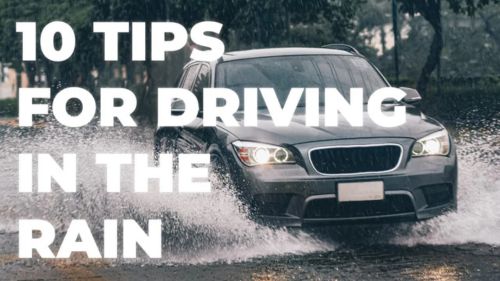
SJFD's Firefighter Paramedic Travis Markowski shares 10 tips for driving safely in the rain (video)
Tonight through the weekend, a strong atmospheric river is expected to deliver considerable rainfall and wind to the Bay Area. The San José Fire Department would like to remind all residence that driving safely in the rain requires diligence and patience because wet roads make for hazardous driving conditions. In fact, wet weather conditions cause more than 860,000 car accidents in the U.S. each year.* To help keep you and other drivers safe on the road, we urge all motorists to review the following safety precautions and stay vigilant when driving in adverse weather conditions.
10 SAFETY TIPS FOR DRIVING IN THE RAIN
- Make sure your car is in good working order. Before you hit the road, inspect your windshield wipers, headlights, taillights, turn signals, tire pressure, and tire treads (balding tires can adversely affect traction). Do this each time you plan on driving in the rain.
- Plan your route. Check local road and traffic conditions. If possible, stay put during hazardous weather and wait until weather conditions improve.
- Turn on your headlights. Headlights not only help increase visibility in bad weather, but they’re also required by law. In California, you must turn on your headlights whenever you use your windshield wipers in bad weather conditions (California Vehicle Code 24400).
- Give extra room to other vehicles. Wet roads can affect your braking distance. Adjust your following distance to appropriately match weather and road conditions. In heavy rain, this may mean doubling your typical following distance.
- Slow down. Hydroplaning, which is when your vehicle slides uncontrollably on a wet surface, most often occurs when a vehicle is driving too fast in wet conditions. As a rule of thumb, you should decrease your speed by ⅓ when roadways are wet —especially when it rains after a dry spell because fresh rainfall can bring up oil and grease from the road and create slippery road conditions.
- Avoid sudden movements. Gentle steering, braking and accelerating are best on wet roads.
- Never use cruise control in wet conditions. Cruise control can interfere with your vehicle’s ability to decelerate while hydroplaning. Furthermore, you should remain fully focused on the road when driving in the rain.
- Avoid standing water on roadways. Driving through standing water can cause hydroplaning. If water is covering the markings on the road, it’s too deep to drive on—turn around and find another route.
- If your car begins to hydroplane, stay calm. Avoid slamming your brakes, gently ease off the gas, and continue to steer in the direction that your car is headed until your vehicle gains traction again. If your car has anti-lock brakes, you may brake normally.
- Pull over if you have to. If you can’t see cars in front of you, or you’re having a hard time controlling your vehicle, pull over and wait for the weather to improve if you can safely do so. Also, rain causes humidity levels to increase and you may discover your windows becomes foggy while driving. Most cars’ ventilation systems include a function that will work to reduce this fog that develops on the interior of your windows and windshield. It may be necessary to pull over if it becomes too hard to see.
*https://ops.fhwa.dot.gov/weather/q1_roadimpact.htm